Pricing isn’t just a number on a product—it’s a powerful tool that can singularly chart a northward sales graph for your B2B marketplace.
In the intricate world of B2B ecommerce, where purchases often involve high-value contracts, lengthy sales cycles, and multiple decision-makers, a strong B2B pricing strategy can shape your business’s profitability, market position, and customer loyalty.
Among these strategies, tiered pricing stands out as a dynamic approach, offering discounts based on purchase volumes. It not only incentivizes bulk buying but also enhances customer satisfaction by aligning costs with business needs, driving repeat purchases, and streamlining inventory turnover.
Before we delve deeper into how to strategise pricing on your B2B marketplace, let us first understand and check out the most popular B2B pricing strategies and how they impact sales.
Table of Contents
5 Most Popular B2B Pricing Strategies And How They Work
Choosing the right pricing strategy is essential for driving sales and ensuring profitability in a competitive B2B environment. While each strategy offers unique benefits, some are better suited to specific industries or customer needs.

Here’s an in-depth look at five key strategies and how they help in driving sales:
1. Cost-Plus Pricing
Cost-plus pricing involves adding a fixed percentage markup to the total cost of production, covering both direct costs (e.g., materials and labor) and indirect costs (e.g., rent and utilities). It’s straightforward and ensures a consistent profit margin, making it popular in industries like manufacturing and construction, where products are standardized. However, this approach doesn’t account for market dynamics or customer expectations, which may limit its appeal in a diverse B2B marketplace.
2. Value-Based Pricing
This strategy sets prices based on the perceived value of a product or service to the customer. Businesses offering innovative or high-quality solutions can use this to justify premium pricing, maximizing profitability. For instance, a tech company offering advanced analytics tools might charge based on how much revenue their clients can generate using the product. While value-based pricing can increase sales, it requires deep customer insights and may alienate price-sensitive buyers.
3. Competitive Pricing
Competitive pricing aligns product prices with those of competitors. It’s widely used in industries where buyers compare multiple vendors before making a decision. While this strategy ensures that businesses remain relevant in a crowded B2B marketplace, it often leads to price wars, reducing profit margins and limiting flexibility for tailored pricing models.
4. Subscription-Based Pricing
Used primarily in SaaS and service industries, this model charges customers a recurring fee for access to products or services. Subscription pricing ensures predictable revenue and long-term relationships, but this B2B pricing strategy may not fit the transactional nature of bulk purchasing common in business-to-business deals. Buyers looking for one-off deals or customized orders might find this model restrictive.
5. Tiered Pricing (The Standout Choice)
Tiered pricing offers discounts based on purchase volumes, encouraging buyers to increase their order sizes. This flexible B2B pricing strategy is highly effective for B2B marketplaces, as it appeals to both small businesses and large enterprises. Smaller buyers can access modest discounts, while bulk purchasers enjoy greater savings.
This pricing policy also creates transparency and buyers can make an informed decision right at the start without going into lengthy negotiation cycles. This not only boosts sales across all buyer segments but also strengthens customer loyalty by demonstrating value at every scale.
7 Undisputable Benefits of Offering Tiered Pricing on your B2B Marketplace
While other pricing strategies have their merits, tiered pricing offers the perfect blend of simplicity, scalability, and customer-centricity. It not only boosts sales across buyer segments but also positions your marketplace as a value-driven and efficient solution. When done right, tiered pricing becomes a powerful lever for sustained growth.
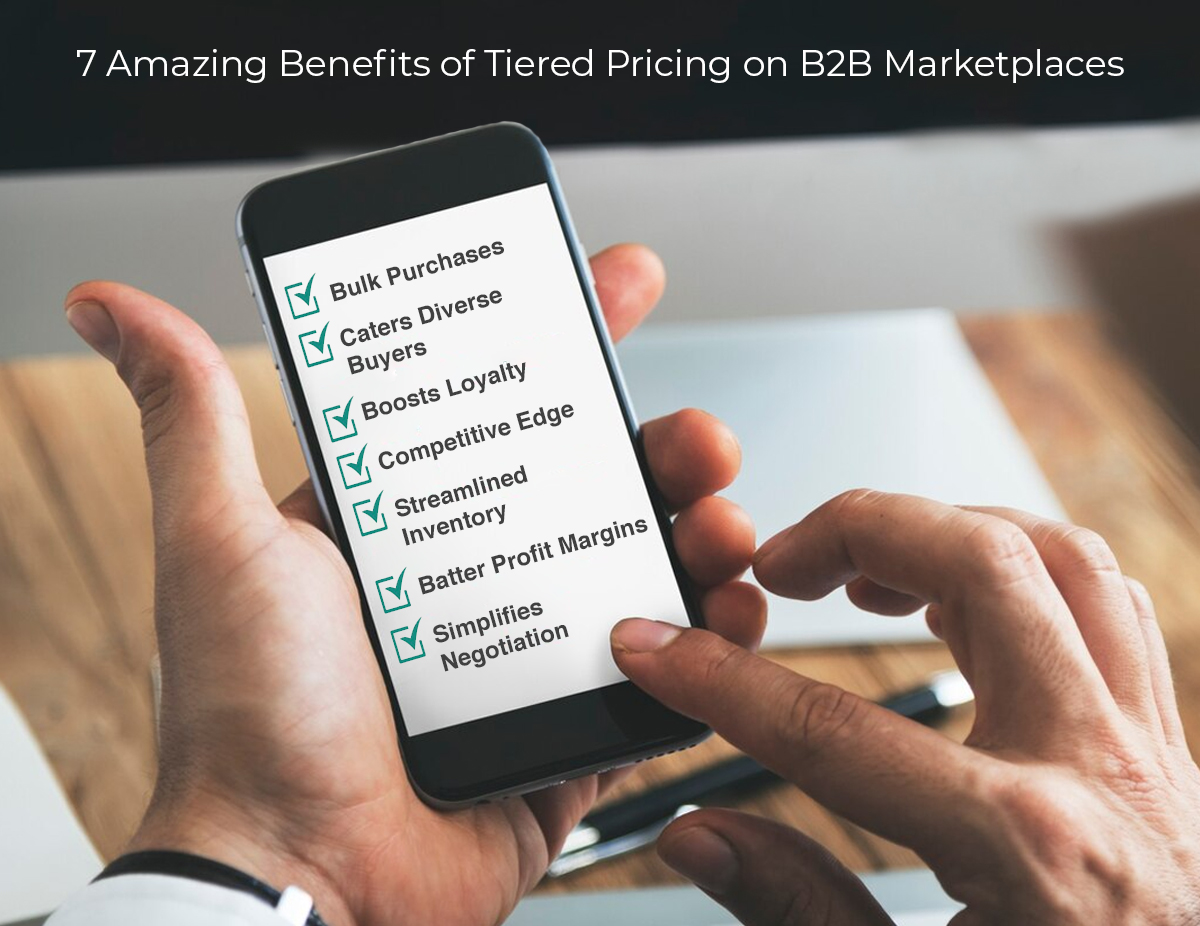
By offering discounts or benefits based on the quantity purchased, tiered pricing incentivises bulk buying, strengthens customer relationships, and improves overall profitability. Let’s dive into the benefits of implementing tiered pricing on your B2B marketplace.
1. Encourages Bulk Purchases
Tiered pricing is a proven strategy to drive larger orders by offering buyers the opportunity to save more as they purchase in higher quantities. In the competitive landscape of B2B marketplaces, where cost efficiency is a top priority, this pricing model makes bulk purchases financially attractive and practical. By motivating buyers to increase their order size, sellers can achieve faster inventory turnover, steady cash flow, and greater overall profitability. This approach works particularly well for high-demand products, seasonal items, or goods with shorter shelf lives, ensuring that both buyers and sellers gain tangible benefits.
Example:
A wholesale stationery supplier can offer tiered pricing, wherein he gives a 5% discount for orders over 200 units and a 10% discount for orders exceeding 500 units. This will incentivise bigger purchases and a retailer initially planning to buy 150 units might be nudged to order 250 units to avail the discount. This not only ensures cost savings for the buyer but also helps the supplier to move a larger volume of inventory in a single transaction.
By adopting this strategy on your B2b marketplace, both parties win: buyers gain better value for money, and sellers enjoy higher sales and smoother inventory management.
2. Tailors to Diverse Customer Segments
B2B marketplaces cater to a wide spectrum of businesses, ranging from small startups to large enterprises with substantial purchasing power. Tiered pricing enables the marketplace to address this diversity by offering tailored price points that match the unique needs of each customer segment. Smaller businesses can opt for lower quantities with reasonable discounts, while larger corporations can unlock deeper savings through bulk purchases. This approach not only ensures that every customer feels valued but also creates a sense of fairness and flexibility, encouraging higher engagement from a variety of buyers. By accommodating different purchasing capacities through tiered B2B pricing strategy, your marketplace can establish itself as an inclusive platform that meets the needs of all types of businesses.
Example:
A packaging supplier offers tiered pricing for its eco-friendly boxes, with a 2% discount on orders above 500 units, a 5% discount above 1,000 units, and a 10% discount above 5,000 units. A small business purchasing 800 boxes enjoys modest savings, while a large enterprise ordering 6,000 units benefits from significant cost reductions. This model ensures both customer segments feel catered to, driving loyalty and repeat purchases from businesses of all sizes.
By leveraging tiered pricing, your B2B marketplace not only boosts sales but also broadens its appeal, fostering growth and inclusivity in a competitive landscape.
3. Improves Customer Loyalty
Consistently offering discounts for larger orders creates a sense of reward and trust among buyers, encouraging them to return for repeat purchases. Buyers appreciate the financial predictability that tiered pricing offers, helping them plan their budgets effectively while reaping tangible savings. Over time, this added value transforms your B2B marketplace into their preferred procurement hub, building lasting relationships. The loyalty cultivated through such incentives not only boosts retention but also turns your customers into brand advocates, helping expand your reach.
Example:
An office supplies seller offers tiered pricing, giving a 5% discount for orders above ₹50,000, 10% for orders above ₹1,00,000, and 15% for orders exceeding ₹3,00,000. A medium-sized company ordering ₹1,20,000 worth of products benefits from significant savings, while a large enterprise purchasing ₹3,50,000 enjoys even greater discounts. These savings encourage both businesses to return for future purchases, reinforcing their trust and loyalty.
By providing predictable and rewarding pricing, your B2B marketplace strengthens buyer relationships, increases customer retention, and promotes organic growth through positive referrals.
4. Enhances Competitive Edge
In today’s competitive B2B ecommerce space, standing out requires more than just good products—it demands features that resonate with your buyers’ priorities. Tiered pricing offers a dynamic, customer-focused approach that sets your B2B marketplace platform apart from competitors relying on rigid, flat pricing models. By offering quantity-based discounts, tiered pricing appeals to cost-conscious businesses seeking flexibility and scalability in their procurement process. This strategy not only demonstrates your marketplace’s understanding of diverse business needs but also positions your platform as a forward-thinking solution for cost-efficient sourcing.
Example:
A manufacturing supplier offers tiered pricing on raw materials, such as a 3% discount for orders above ₹1,00,000 and a 7% discount for orders above ₹5,00,000. A buyer evaluating multiple platforms quickly gravitates toward the one offering savings tailored to their purchasing scale. This pricing strategy not only secures the buyer’s business but also deters them from considering competitors with flat pricing.
By adopting tiered pricing, your B2B marketplace website establishes itself as a leader in value-driven solutions, attracting buyers seeking flexibility while enhancing your competitive edge in the B2B landscape.
5. Facilitates Inventory Management
Tiered pricing is a strategic tool for streamlining inventory turnover by incentivising bulk purchases. When buyers opt for larger orders to take advantage of discounts, it accelerates the movement of products from warehouses, creating room for new stock. Tiered pricing strategy in B2B is especially advantageous for time-sensitive items like perishable goods or products with expiration dates, as it minimizes the risk of wastage, enhances cash flow and also helps maintain optimal stock levels without resorting to frequent markdowns or clearance sales.
Example:
A food distributor on your B2B marketplace can offer tiered pricing for packaged snacks, providing a 5% discount for orders over 1,000 units and a 10% discount for orders above 5,000 units. Retailers can purchase in larger quantities to maximize savings, ensuring that the distributor clears perishable inventory quickly before expiration. This B2B pricing strategy reduces storage costs, minimizes waste, and helps maintain profitability without heavy discounting.
By encouraging efficient inventory movement, tiered pricing supports a healthier bottom line, reduces operational inefficiencies, and ensures that your marketplace remains agile and profitable.
6. Boosts Profit Margins
While buyers enjoy cost savings with tiered pricing, sellers benefit from increased profitability driven by larger order volumes. By balancing a lower price per unit with the higher number of items sold, this B2B pricing strategy creates a win-win situation for both parties. For marketplaces, tiered pricing provides a consistent path to achieving revenue targets while maintaining competitive pricing. Additionally, larger orders typically reduce per-unit costs for storage, packaging, and handling, further enhancing profit margins. When aligned with operational efficiencies, tiered pricing not only optimizes profitability but also strengthens customer relationships by delivering value.
Example:
A supplier of electronic components on your B2B marketplace can offer a 7% discount on orders above 1,000 units. While buyers save money per unit, the supplier benefits from selling larger quantities in a single transaction, reducing the handling costs and ensuring quicker inventory turnover. This balance allows the supplier to maintain healthy margins while fulfilling customer demands for cost-effective solutions.
By leveraging tiered pricing, your Business-to-Business marketplace can achieve greater profitability, streamline operations, and continue to deliver a superior buying experience without compromising on margins.
7. Simplifies Negotiation Process
In B2B transactions, pricing negotiations can often be complex and time-intensive. A transparent tiered pricing structure eliminates the need for prolonged discussions by clearly outlining the discounts available at each purchase volume. Buyers can quickly assess their options and make informed decisions, streamlining the entire sales process. This approach not only enhances the buying experience by reducing ambiguity but also enables sellers to maintain a predictable and efficient sales workflow. By removing the friction of traditional negotiations, tiered pricing fosters faster agreements, improves customer satisfaction, and increases the likelihood of completed transactions.
Example:
A machinery supplier offers tiered pricing, with a 5% discount for orders above 50 units and a 10% discount for orders above 100 units. Instead of negotiating individually, buyers immediately know their cost savings based on order size, enabling them to finalize purchases quickly. The supplier, in turn, benefits from faster deal closures and reduced administrative overhead.
By simplifying pricing discussions, tiered pricing not only saves time but also strengthens buyer-seller relationships, making your marketplace more efficient and appealing to all stakeholders.
Implementing Tiered Pricing Strategy Made Easy With StoreHippo B2B Ecommerce Solutions
To implement a robust tiered pricing strategy on your marketplace, your enterprise needs a robust B2B marketplace software that comes with a host of B2B features to implement, monitor and adjust different pricing and discount strategies seamlessly.
StoreHippo B2B ecommerce solutions fit the bill here with a comprehensive B2B platform that comes packed with tools like support for tiered pricing, pricing override, flexible discount engine, region-specific multi-currency pricing, customer segmentation through multi-store network, powerful tax engine to simplify taxation and analytics to track performance. These features ensure your enterprise can implement, monitor, and fine-tune tiered pricing strategies effectively, driving higher sales and customer satisfaction.
Your enterprise can easily help its vendors craft strategic wholesale prices by using the ease offered by these solutions. Along with these tools, StoreHippo B2B ecommerce solutions also offer a gamut of B2B features that make wholesale selling and buying easy and seamless.
StoreHippo B2B ecommerce software is built on a decoupled headless platform which gives better creative control to your brand to craft personalised, omnichannel buyer journeys on your B2B marketplace. The inherent flexibility, scalability and 300+ built-in features ensure that your B2B marketplace can adapt to evolving market demands while delivering exceptional value to customers.
StoreHippo’s advanced discount engine enables businesses to create customized pricing tiers based on purchase volumes, product categories, or buyer profiles. This flexibility allows your B2B marketplace to incentivize bulk buying with progressive discounts, encouraging larger orders while ensuring healthy profit margins. Whether it’s offering specific discounts for enterprise clients or tailored pricing for small businesses, StoreHippo provides the tools to address the unique needs of every buyer.
With microservices-based architecture and 300+ API endpoints of the StoreHippo B2B platform, you can seamlessly integrate with your vendors’ existing systems or remove and add new software and service providers easily.
With analytics and reporting tools built into StoreHippo B2B ecommerce solutions, you can track the performance of your pricing strategy, identify patterns, and refine your tiers for optimal results. These insights not only improve your pricing strategy but also enhance the overall buyer experience on your B2B marketplace software. You can also integrate popular analytics and marketing tools like Google Analytics, Facebook Pixel etc.
By leveraging StoreHippo’s powerful B2B features, implementing and managing a tiered pricing strategy becomes a hassle-free process, helping your business boost revenue, foster loyalty, and stay ahead in the competitive B2B landscape.
Conclusion
Implementing tiered pricing on your B2B marketplace is a win-win strategy for all stakeholders. Buyers enjoy savings and better deals, while sellers and your enterprise brand benefits from increased sales volumes, stronger customer loyalty, and improved profitability. In a competitive landscape, tiered pricing can be the differentiator that sets your B2B marketplace apart.
With StoreHippo B2B ecommerce solutions, implementing strategic pricing models like tiered pricing becomes effortless. StoreHippo’s advanced discount engine, tired pricing solutions, and built-in analytics provide you with all the tools needed to create, monitor, and refine your pricing strategies.
Ready to take your B2B marketplace to the next level? Explore StoreHippo B2B ecommerce solutions by starting your 14-day free trial now.
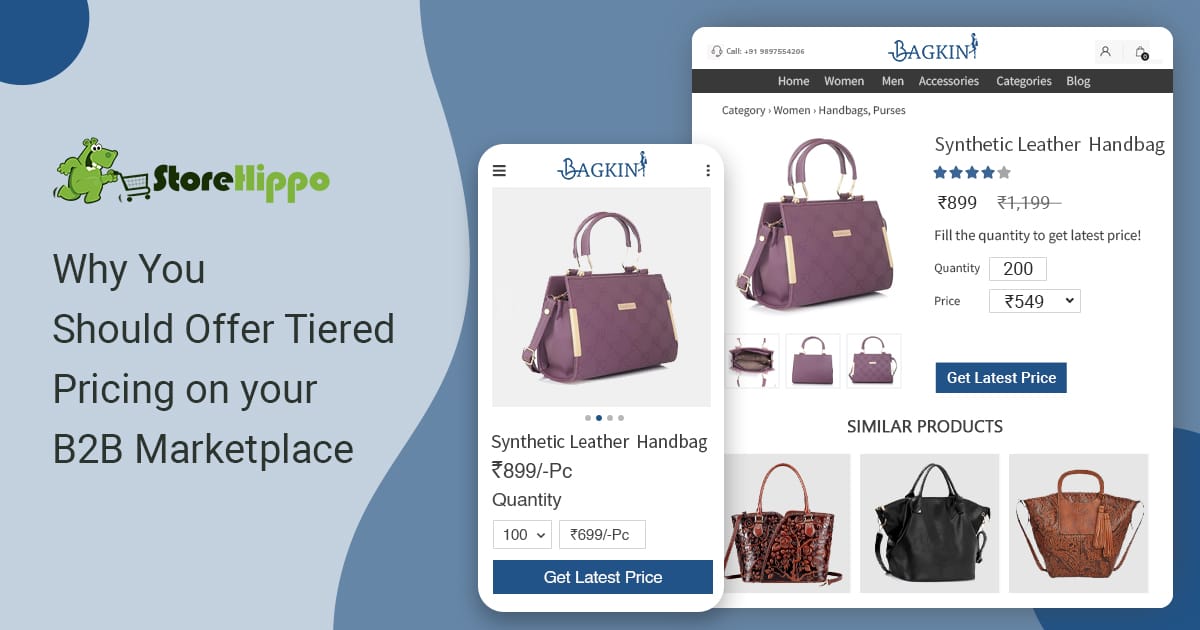

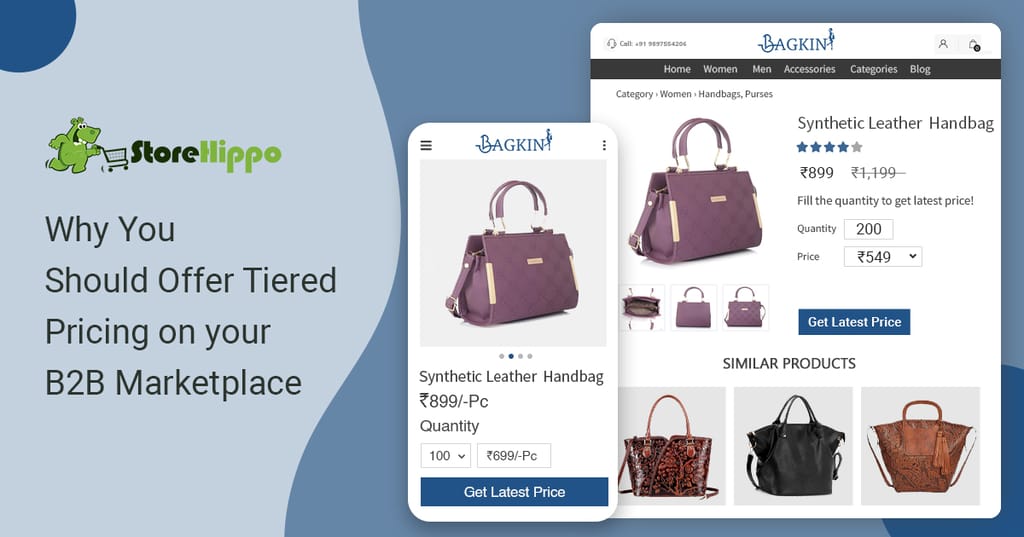













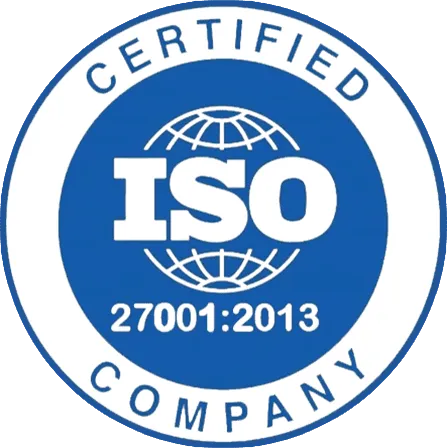


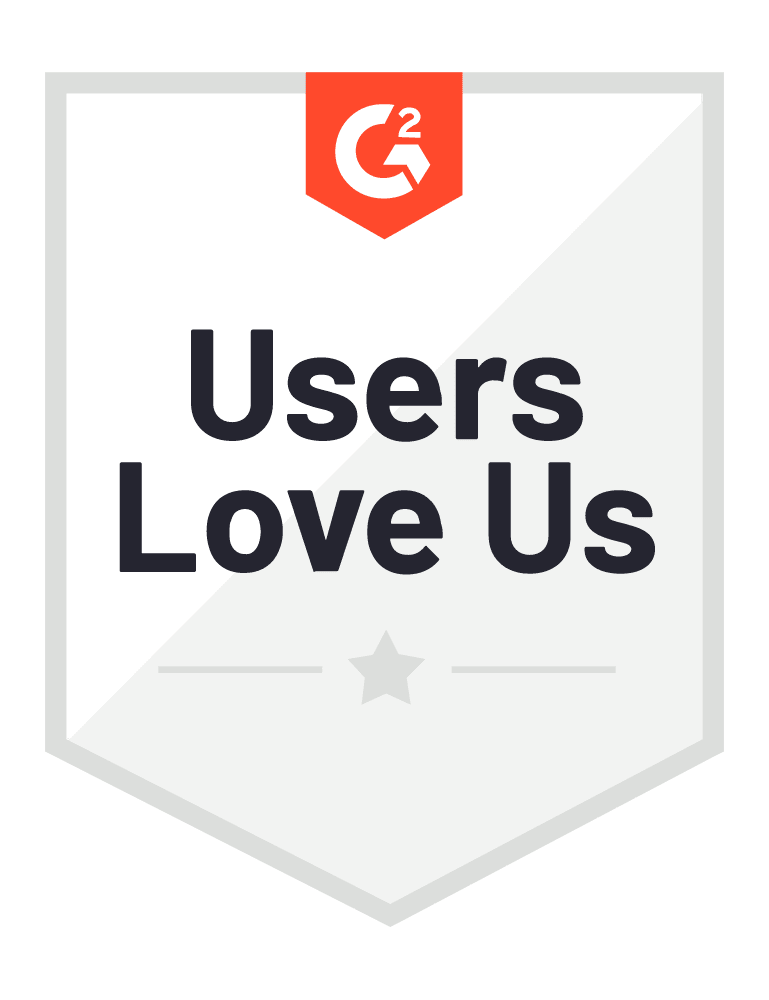

Leave A Comment